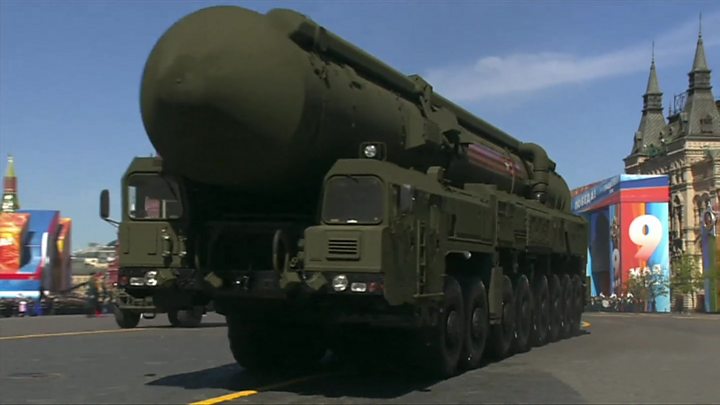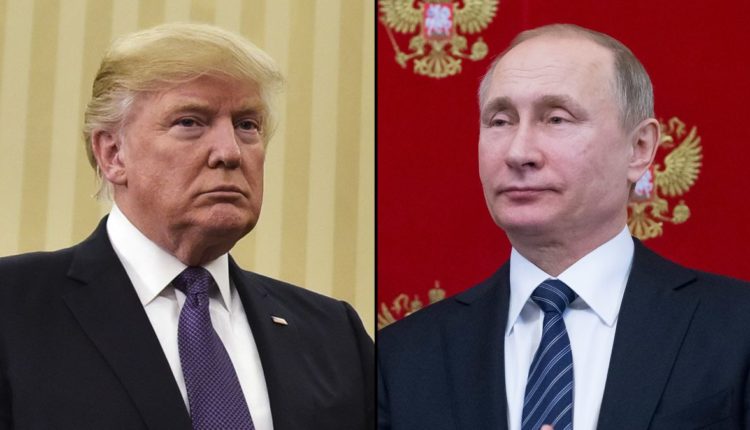INF nuclear treaty: US pulls out of Cold War-era pact with Russia
The US is set to formally withdraw from a nuclear treaty with Russia, raising fears of a new arms race.
The Intermediate-Range Nuclear Forces Treaty (INF) was signed by US President Ronald Reagan and Soviet leader Mikhail Gorbachev in 1987.
It banned missiles with ranges between 500 and 5,500 km (310-3,400 miles).
But earlier this year the US and Nato accused Russia of violating the pact by deploying a new type of cruise missile, which Moscow has denied.
The Americans said they had evidence that Russia had deployed a number of 9M729 missiles – known to Nato as SSC-8. This accusation was then put to Washington’s Nato allies, which all backed the US claim.
President Donald Trump announced in February that the US would withdraw from the pact if Russia didn’t come into compliance, and set the deadline for 2 August.
Russian President Vladimir Putin suspended his country’s own obligations to the treaty shortly afterwards.
What are the risks?
“An invaluable brake on nuclear war” was being lost, warned UN Secretary General Antonio Guterres.
“This will likely heighten, not reduce, the threat posed by ballistic missiles,” he added, urging all parties to “seek agreement on a new common path for international arms control”.
Analysts fear that the collapse of the historic agreement could lead to a new arms race between the US, Russia and China.
“Now that the treaty is over, we will see the development and deployment of new weapons,” Pavel Felgenhauer, a Russian military analyst, told AFP news agency. “Russia is already ready.”
Last month, Nato Secretary General Jens Stoltenberg told the BBC that the Russian missiles – which he said were in “clear violation of the treaty” – were nuclear-capable, mobile, very hard to detect, and could reach European cities within minutes.
“This is serious,” he added. “The INF treaty has been a cornerstone in arms control for decades, and now we see the demise of the treaty.”

He added that there had been “no signs whatsoever” that Russia would comply with the agreement – and that “we have to be prepared for a world without the INF treaty and with more Russian missiles”.
Mr Stoltenberg also said that any decision by Nato about how exactly to respond would come after the deadline.
Nato has no plan to deploy land-based nuclear missiles of its own in Europe, he said, but conventional air and missile defence, new exercises and readiness of forces, and new arms control initiatives could all form part of the response.



